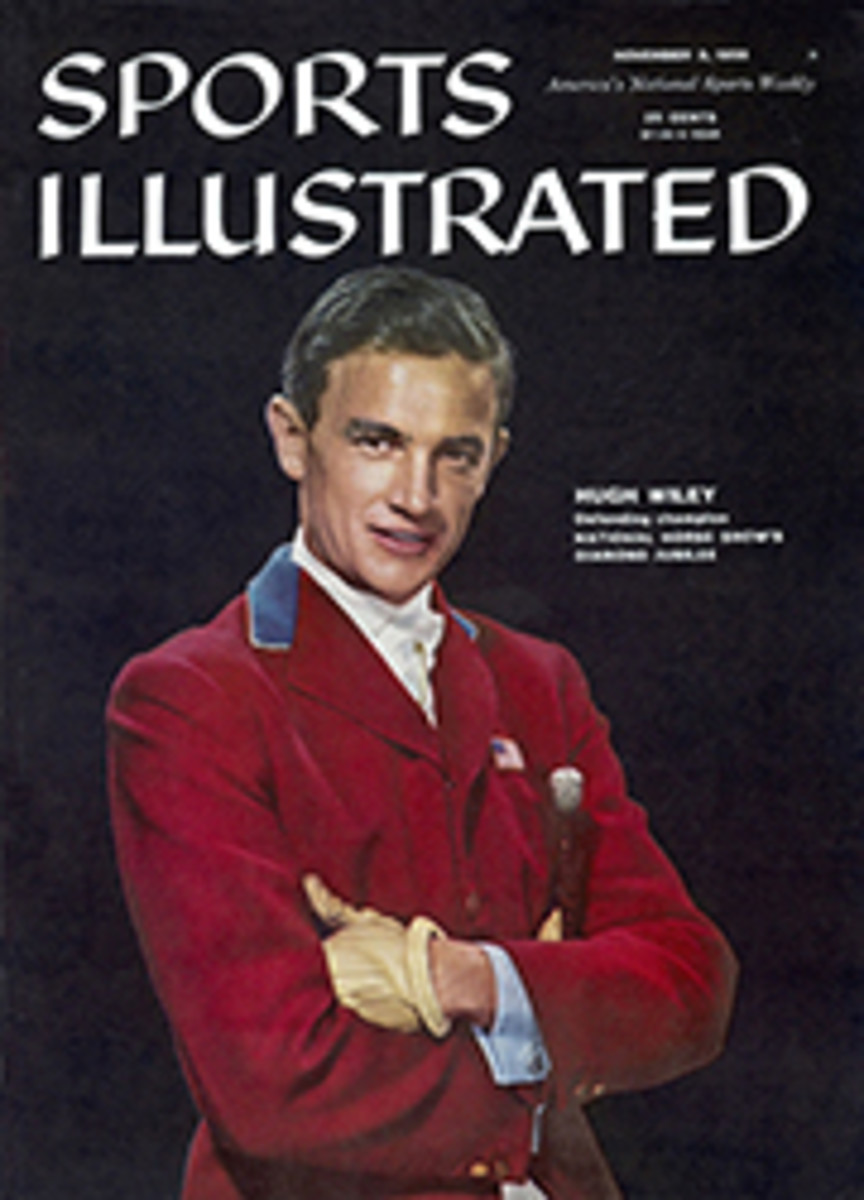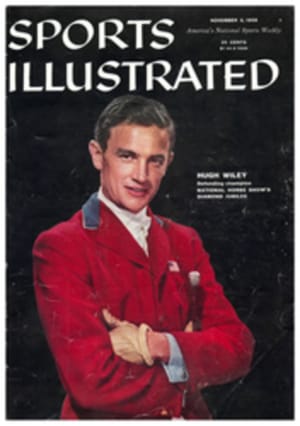
Pop Ivy's card tricks
College football—or, more specifically, the Army—introduced a new wrinkle to football this season with Lonesome George, the isolated end. But the pros—or, more specifically, the Chicago Cardinals—have been even more inventive. Their contribution is the first truly new formation to come along since the T captured the fancy of the coaches in the early 1940s (see page 33).
It's the odd formation shown below, devised by Frank (Pop) Ivy, the Cardinals' new head coach. Pop calls it the Jack and Jill formation. Others call it anything from a spread T or a triple-wing T to less complimentary names when it breaks loose a Cardinal back or gets an end in the open. However, it is unlikely that the Ivy look will take over as quickly as did the T formation, since the Cardinals are not likely to set the world on fire this year. Ivy's unorthodox offense has put them in third place in the league in total offense, but a leaky defense has accounted for an anemic 2-3 record to date.
Although the Cardinals lost to the Cleveland Browns for the second time last Sunday, 38-24, again it was a failure of the Card defense. Cleveland Coach Paul Brown said after his team won a 35-28 squeaker over the Cardinals earlier in the season: "Ivy took us by surprise and we did a lot of changing around to stop the offense. We didn't succeed—so we just had to outscore 'em. But you'll see a lot of that offense. The answer might be in a four-man or even a three-man defensive line. [The four-man line defense is shown below.] With those ends and halfbacks only a step out of your backfield, you have to use a lot of friendly people back there to defend against passes."
The Browns countered Ivy's offense with the same strategy they had used in their earlier victory: they simply outscored Chicago as Jim Brown made four touchdowns and gained 180 yards rushing. But the significant thing was the Cardinals' 24 points, made despite the early loss of John Crow (knee injury). With two weeks to mull over a defense, the best defensive coach in the league, with the best defensive team, could still not make any significant reduction in the Cardinal point production.
"I got the idea for this offense in Canada," Ivy said. "The big problem there is trying to figure out what to do with that fifth back. At first, with the Cards, I used the fullback behind the quarterback—a sort of double-wing T. I had this Jack and Jill formation all the time, but we saved it for the first Cleveland game. The fullback moves into the slot to right or left outside the halfback. It gives me five receivers in position to get into the defense's secondary in a few steps, and I have two backs in position to run."
The two flanked halfbacks are in position to run, although not as effectively as in a normal T. In order to hit through the line, they must slant in as the quarterback takes a couple of steps toward the prospective ball carrier. The halfbacks hit the hole at an angle to the line of scrimmage, and thus lose straight-ahead power. This is compensated in part by sending one or the other of them in motion opposite before the snap. He is then in position to take a hand-off and bang head on into the line.
"Timing was the hardest thing to perfect," Ivy says. "The back in motion has to be at precisely the right place when the ball is snapped."
The lack of straight-ahead power is balanced by the fact that the defense is forced to use its linebackers on the flanks, covering the widespread backs, leaving the middle of the line entirely to the four defensive linemen. If a Cardinal back breaks through, he has comparatively clear sailing until he hits the secondary defenders. With hard-driving backs like John Crow and Ollie Matson, a substantial gain is almost inevitable. A running quarterback, such as the Cardinals' Lamar McHan or Rookie M.C. Reynolds, also finds an inviting path through the middle.
All in all, it is an exciting, quick-striking offense. Its weaknesses are too little protection for a passer should the defense send the linebackers rushing in as well as the linemen; less deception than the normal pro T, since the backs can't take fake handoffs; and a lack of straight-ahead power. On the credit side, the Cardinal triple-wing forces the defense wide and thin, vulnerable to quick passes, vulnerable to a running quarterback or a slanting halfback up the middle. At present, the credits seem to outweigh the debits; if Paul Brown has had trouble devising an effective defense, it seems doubtful that one will be found soon.
In Los Angeles, 81,000 fans turned out for the Ram-Detroit Lion game; 59,000 watched the Chicago Bears play the San Francisco 49ers, and Baltimore had a record crowd of 54,504 for its game with Washington. The pros, whose stock in trade is touchdowns, seemed headed for another record season in attendance.
In the games themselves, the Baltimore Colts, raging at Washington Owner George Preston Marshall's churlishness at a Baltimore banquet (he responded to a Colt player's kidding by calling the player a liar), took it out on the Redskins 35-10, to remain undefeated. The Chicago Bears remained in second by defeating the San Francisco 49ers 27-14; George Halas, the Bear owner whose sideline antics often provoke boos from fans when the Bears are on the road, was attacked by a 49er fan at the half. The fan, police said later, was not drunk—"just a good football fan." The Detroit Lions and the Green Bay Packers won their first victories of the season, the Lions over the Los Angeles Rams (41-24) and the Packers over Philadelphia Eagles (38-35).
The New York Giants, without Frank Gifford, who is sidelined by torn knee ligaments, and also without Quarterback Charley Conerly, who is sidelined by Quarterback Don Heinrich, nevertheless stayed within shouting distance of Cleveland in the Eastern Conference by splashing to a 17-6 victory over Pittsburgh.
ILLUSTRATION
86
33
71
62
50
8
67
70
44
35
20
FOOTBALL'S NEWEST OFFENSE
Triple-wing T provides quick striking power with five pass receivers—Ends Gern Nagler (86) and Woodley Lewis (20), Halfbacks Ollie Matson (33) and John Crow (44) and Fullback Joe Childress (35)—poised on or near scrimmage line. The defense must commit a linebacker or halfback to each receiver, leaving the middle of the line vulnerable to a running quarterback such as Lamar McHan (8). On most plays, Matson or Crow starts in motion to the opposite side before the snap, can take handoff for sweep, running pass, or off-tackle play. By slanting in toward quarterback, they can also hit off tackle on quick openers.
[originallink:10486951:41202]

